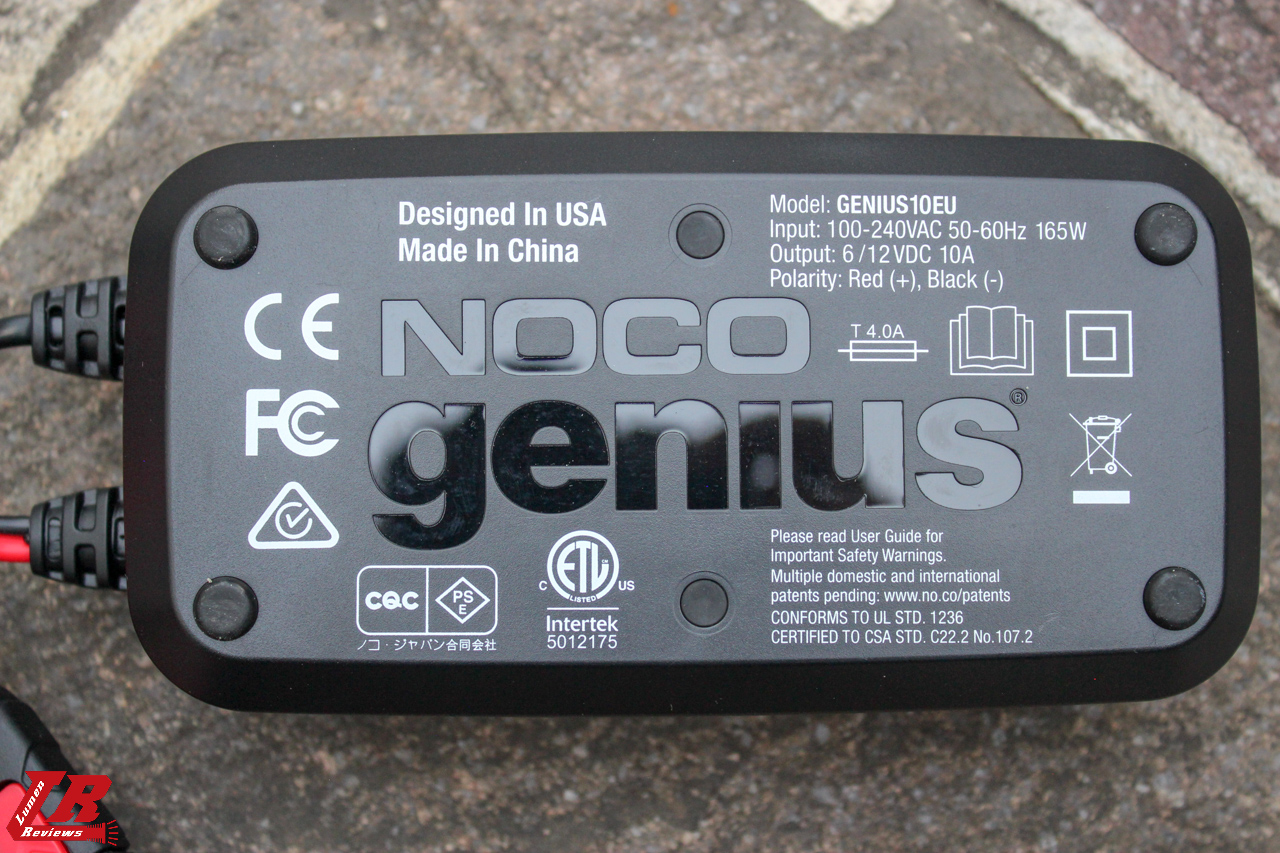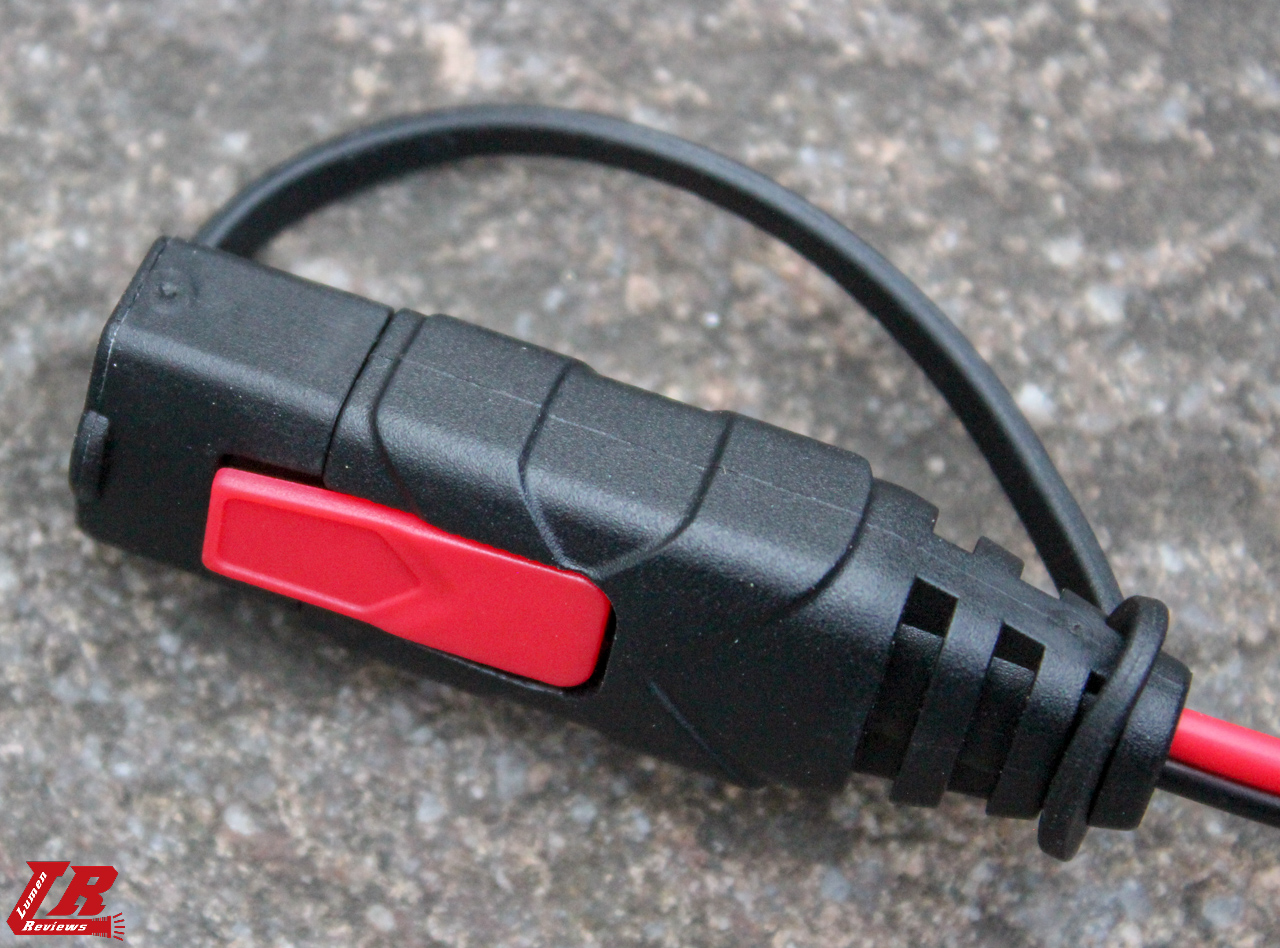The Noco Genius 10 is a battery charger and maintainer, for 6 and 12 volt batteries.
I have almost no knowledge about electronic, however, I've been using flashlights, batteries and chargers for 10+ years as a consumer. So, in this thread I'll give you my honest opinion on this product as a user, considering that I have been using car battery chargers for more than 5 years.
I needed a charger to replace the CTEK MXS 5.0 (that I owned for more than 5 years, and now I replaced with a charger that doesn't have it), and ideally it would need to have these features:
- Small size
- Regular EU type plug
- Long built in cables
- Lithium phosphate battery support
- Automatic temperature detection.
I heard Noco mentioned amongst friends and relatives as a producer of car battery boosters, and just recently I found out that they had also a line of chargers.
After some research, I gave some of their models a go.
In particular, I found the Genius 10 to be the model best suited for my needs (and an amazon sale on their line pushed my indecision).
The charger comes in a simple cardboard box with an industrial design.

Underneath it, a box with the specs and what's inside it




The Noco Genius 10 comes with: battery clamps cable, manual, velcro holder.

The main unit


On the back of the main unit there are all the specs

Both male and female connections have a rubber port cover, to protect the contacts from dust and water (the NOCO Genius 1 is rated IP65). The connectors inside have a different shape, so only NOCO accessories will work.





What can I say about the battery clamps? They are very, very well built (they are even bigger than the one of the Noco Genius 1 and 5). They look like they are sturdy, massive, metal clamps with a plastic cover built around them. The cables are attached to the clamps with a screw, and if you don't need to use the battery clamps, you can disconnect the cable and screw it directly on the battery, like a regular eyelet cable. On the positive cable, there's a fuse.






I measured on my sample a charging current of basically 10A.

UI
There's only one switch on the device.
There are several modes:
- 12 v (regular lead batteries)
- 12 v AGM (AGM lead batteries)
- 12 v lithium (for lithium phosphate batteries)
- 6 v (regular lead batteries, to activate it press and hold for 3 seconds)
- 6 v AGM (AGM lead batteries)
- Force mode (charging batteries that are discharged under 1 volt, to activate press and hold for 5 seconds)
- 12 v supply (Produces 12 volt to power up devices like fridges, oil pumps or power the electronic central unit of the car when changing the battery in order to not lose data; to activate it press and hold for 3 seconds without clamps connected)
- 12 v repair (for restoring old damages batteries, to activate it press and hold for 3 seconds when clamps are connected).
There are several error LEDs, from left to right:
- Battery voltage is too high for the selected charge mode. Check the battery and charge mode
- Possible battery short / Battery will not hold a charge. Have battery checked by a professional
- Reverse polarity. Reverse the battery connections
- Standby, select a charging mode.
If the internal temperature is too high or low, the 3 error LEDs will blink at the same time.
The level off the charge is indicated by 4 color LEDs, on the top right. The first 2 red, a third orange and a fourth green.
Every led corresponds to around 25% of the battery capacity and will blink slowly until turning on solid (ie, when the battery is under 25% the first red LED will blink, when the battery is above 25% the first red LED will be on constantly and the second will blink).
When the charging is complete, the green LED will blink.
When the process is complete the Noco5 will switch to "optimization mode" (safely maintaining the level of the battery), with all the aforementioned level LEDs being off but the green one, that will keep blinking.
The higher current than most charging devices will allow me to charge car batteries with shorter times, especially useful when you are in a hurry.
I really wish this charge had a low current charging mode, useful to charge smaller batteries.
Beside this, I am impressed with what I can see from this charger.
I have almost no knowledge about electronic, however, I've been using flashlights, batteries and chargers for 10+ years as a consumer. So, in this thread I'll give you my honest opinion on this product as a user, considering that I have been using car battery chargers for more than 5 years.
I needed a charger to replace the CTEK MXS 5.0 (that I owned for more than 5 years, and now I replaced with a charger that doesn't have it), and ideally it would need to have these features:
- Small size
- Regular EU type plug
- Long built in cables
- Lithium phosphate battery support
- Automatic temperature detection.
I heard Noco mentioned amongst friends and relatives as a producer of car battery boosters, and just recently I found out that they had also a line of chargers.
After some research, I gave some of their models a go.
In particular, I found the Genius 10 to be the model best suited for my needs (and an amazon sale on their line pushed my indecision).
The charger comes in a simple cardboard box with an industrial design.

Underneath it, a box with the specs and what's inside it




The Noco Genius 10 comes with: battery clamps cable, manual, velcro holder.

The main unit


On the back of the main unit there are all the specs

Both male and female connections have a rubber port cover, to protect the contacts from dust and water (the NOCO Genius 1 is rated IP65). The connectors inside have a different shape, so only NOCO accessories will work.





What can I say about the battery clamps? They are very, very well built (they are even bigger than the one of the Noco Genius 1 and 5). They look like they are sturdy, massive, metal clamps with a plastic cover built around them. The cables are attached to the clamps with a screw, and if you don't need to use the battery clamps, you can disconnect the cable and screw it directly on the battery, like a regular eyelet cable. On the positive cable, there's a fuse.






I measured on my sample a charging current of basically 10A.

UI
There's only one switch on the device.
There are several modes:
- 12 v (regular lead batteries)
- 12 v AGM (AGM lead batteries)
- 12 v lithium (for lithium phosphate batteries)
- 6 v (regular lead batteries, to activate it press and hold for 3 seconds)
- 6 v AGM (AGM lead batteries)
- Force mode (charging batteries that are discharged under 1 volt, to activate press and hold for 5 seconds)
- 12 v supply (Produces 12 volt to power up devices like fridges, oil pumps or power the electronic central unit of the car when changing the battery in order to not lose data; to activate it press and hold for 3 seconds without clamps connected)
- 12 v repair (for restoring old damages batteries, to activate it press and hold for 3 seconds when clamps are connected).
There are several error LEDs, from left to right:
- Battery voltage is too high for the selected charge mode. Check the battery and charge mode
- Possible battery short / Battery will not hold a charge. Have battery checked by a professional
- Reverse polarity. Reverse the battery connections
- Standby, select a charging mode.
If the internal temperature is too high or low, the 3 error LEDs will blink at the same time.
The level off the charge is indicated by 4 color LEDs, on the top right. The first 2 red, a third orange and a fourth green.
Every led corresponds to around 25% of the battery capacity and will blink slowly until turning on solid (ie, when the battery is under 25% the first red LED will blink, when the battery is above 25% the first red LED will be on constantly and the second will blink).
When the charging is complete, the green LED will blink.
When the process is complete the Noco5 will switch to "optimization mode" (safely maintaining the level of the battery), with all the aforementioned level LEDs being off but the green one, that will keep blinking.
The higher current than most charging devices will allow me to charge car batteries with shorter times, especially useful when you are in a hurry.
I really wish this charge had a low current charging mode, useful to charge smaller batteries.
Beside this, I am impressed with what I can see from this charger.

